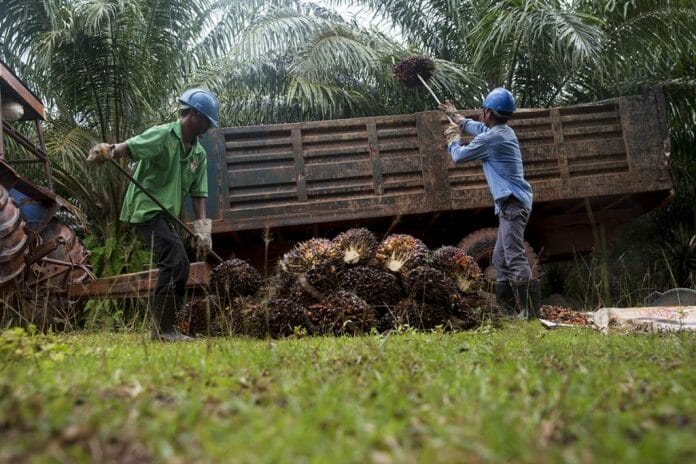Kim Loong Resources Bhd’s (KMLOONG) quarter one financial year 2024 net profit fell 19.7% year on year to RM31.5 million, mainly dragged down by the sharp decline in average selling prices of fresh fruit bunch and crude palm oil that offset the better production.
“Revenue for the quarter decreased 35.9% year on year to RM326.7 million. The reported earnings were in line, accounting to 25.9% of our full year net profit forecast of RM121.8 million and 25.2% of consensus forecast of RM125 million,” said Malacca Securities in the recent Stock Digest Report.
The research house noted that as at quarter one financial year 2024, KMLOONG operates in a healthy balance sheet with a net cash
position of RM304.1 million.
As of quarter one financial year 2024, KMLOONG total planted area stood at 15,940 per hectare. KIMLOONG maintained a healthy tree profile. Malacca Securities gathered that no re-planting activities took place during the quarter.
During the quarter, KMLOONG’s fresh fruit bunch production climbed 19.3% year on year to 72,831 tonnes, which accounts to 24.5% of their projection at 297,000 tonnes, while crude palm oil production added 3.6% year on year to 67,200 tonnes.
Meanwhile, crude palm oil extraction rate stood at 20.5%; continues to outperform Malaysia’s average crude palm oil extraction rate of 19.6% over the same period highlighting the group’s production efficiency.
“Although crude palm oil prices hovered largely below our assumption of RM4,000 per megatonne in 2023, we reckon that downside will be cushioned by the onset of the periodic dry weather phenomenon that threaten production. According to the Environment Minister Nik Nazmi Nik Ahmad, this phenomenon may extend into April 2024,” said Malacca Securities.
Still, the research house expects upsides to be capped as demand may remain sluggish, owing to the worsening of global economic outlook, persistently high inflation and elevated interest rates environment.
Malaysia palm oil stocks rose 12.6% month-on-month to 1.7 million tonnes in May 2023, driven by the higher crude palm oil production following the easing of labour shortage, while palm oil export fell -0.8% month-on-month during the month.
This suggests that concerns over weaker demand may outweigh the prospects of tighter supply. Likewise, Indonesia’s palm oil export fell 19.2% month-on-month in April 2023 to 2.1 million tonnes, highlighting the sluggishness in demand.
On a brighter note, fertiliser prices which accounts to majority of the production costs has started to ease. This is also in line with the normalising freight cost, which bodes well for the group’s margins.
Given the reported earnings came largely in line, we made no changes to our earnings forecast as we expect crude palm oil prices is expected to trade at an average RM3,500-4,000 per megatonne for the remainder of the year.
“We maintained our Hold recommendation on KMLOONG with an unchanged target price of RM1.89. Our target price is derived by pegging a target price-earnings ratio of 15.0x to its financial year 2024 future earnings per share of 12.6 sen. The ascribed target price-earnings ratio is in line with the mid-sized planters average at around 13.5-15.5x,” said the research house.
Risks to their recommendation include fluctuations in crude palm oil prices. The volatility of crude palm oil prices is subject to weather conditions, demand, mainly from both China and India, and supply from both Malaysia and Indonesia. The supply of soybeans could also affect crude palm oil prices as both products are regarded as substitutes.









